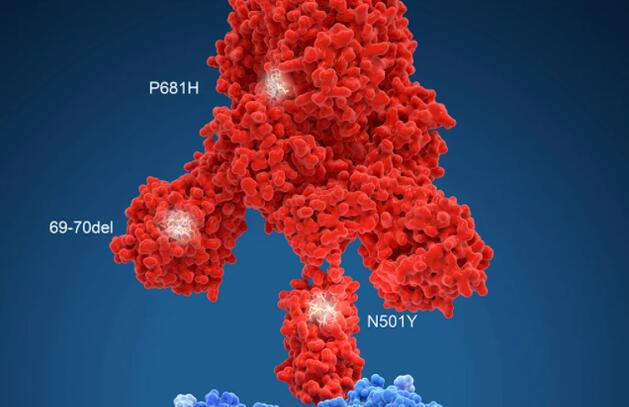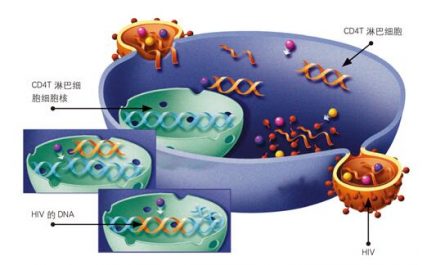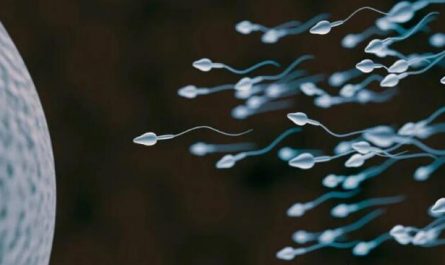In the battle with the new coronavirus that lasted for more than a year, mankind has encountered many challenges. Vaccines have brought us hope, but new virus mutations are also worrying. In order to win this protracted battle, we need to understand what drives the emergence of mutant strains of the new coronavirus and what these mutations mean.
At the beginning of the existence of the new coronavirus, it somehow acquired an ability that can profoundly affect human health. A seemingly inconspicuous mutation appeared in the genetic code of this virus, probably from an unfortunate accident-it infected a bat at the same time as another virus, and the gene fragments of both were in the bat. Mixed together.
However, it was the instructions contained in this small segment of the genome that changed a key part of the virus-the spike protein (also known as Spike protein, S protein). This important protein is attached to the outside of the coronavirus and can bind to receptors on the outside of the cell, helping other parts of the virus to sneak into the cell to replicate.
This mutation in the spike protein allows the new coronavirus to hijack furin in the human body. This enzyme is like a pair of molecular scissors, capable of cutting through hormones and growth factors to activate them. When furin cuts off part of the spike protein of the new coronavirus (the spike protein usually folds into a series of loops outside the virus), the spike protein is opened like a hinge.
Yohei Yamauchi, a viral cell biology researcher at the University of Bristol in the United Kingdom, has been studying how this mutation can make the new coronavirus more infectious to humans. He said: “This process has exposed a new sequence in the spike protein. This It is one of the changes that makes this virus very different from the previous coronaviruses that caused Sars and Mers.”
This new mutation also means that the new coronavirus may suddenly bind to Neuropilin 1 (NRP1) and invade the inside of cells. This protein is located on the outside of human respiratory and olfactory epithelial cells, and can guide substances into cells and tissues. In other words, this mutation provides the new coronavirus with a key to enter the cell, allowing them to replicate in large numbers in the human respiratory tract.
Although this mutation has not existed in the new coronavirus for a long time, its importance is self-evident. Some researchers believe that this may be one of the key mutations for the new coronavirus to cross species and begin to spread the disease rapidly in humans. However, almost at the same time the new coronavirus spread rapidly, researchers began to discover other mutations in it.
In almost every infected person, the virus undergoes very subtle changes-taking a letter from here in the genetic code, deleting another letter there, or replacing it with a different letter, etc. These small errors usually occur when viruses take over the molecular machinery of the cell to replicate. Except for helping scientists track how the virus spreads around the world, most mutations have little effect. But in a few cases, the emergence of a certain mutation will change the spread of the virus, or change the infectivity of the virus, or even change the severity of the disease caused by the virus.
As the new coronary pneumonia pandemic continues, it is of vital importance to understand the factors that may promote certain changes in the virus and the impact of these factors on the behavior of the virus. The following are some of the most important mutations in the new coronavirus so far.
D614G mutation
When the outbreak began in early December 2019, the mutation that caused furin to cut off the spike protein was already present in the new coronavirus. In just a few months, Europe began to detect the first cases. Researchers found that the new coronavirus has undergone major changes at this time, which has had a major impact on the course of the epidemic.
Although there is now evidence that the new crown virus appeared in Europe as early as December 2019, the initial spread of the virus appeared in northern Italy in February 2020. Samples taken from there on February 20 showed that the new coronavirus had a mutation in the spike protein, which caused a significant increase in the number of virus particles released from infected cells (especially the patients’ upper respiratory tract cells). The researchers called this mutation D614G, which is also the dominant strain of the current global pandemic. It seems that this mutation causes the virus to spread more quickly from person to person, possibly because the infected person coughs and exhales more virus.
The D614G mutation provides a more “open” structure for the spike protein of the new coronavirus, improving its ability to bind to the ACE2 receptor on the surface of human cells. The ability of the new coronavirus to bind to ACE2 has been thought to be one of the reasons it was able to infect humans in the first place, and the new mutations have enabled the virus to enhance its ability to target human cells.
Subsequent studies have shown that the D614G mutant virus strain is more infectious than the new coronavirus found in Wuhan, and seems to be more common among young people. But this also comes at a price-mutations may make the virus more vulnerable to antibodies, that is, it is less able to cause infection in people who have been ill. On the other hand, this also means that convalescent plasma from recovered patients can be used to fight the virus.
Festival virus strain
Subsequently, with the relaxation of the European blockade in the summer, international travel picked up again, and another important new variant of the new coronavirus appeared in Spain. The mutant virus strain was first detected in June 2020 and then spread throughout Europe. By September, 50% to 70% of cases in Switzerland, Ireland, and the United Kingdom were of this strain.
This virus strain was named 20A.EU1, and the researchers found a mutation named A222V on its spike protein. But this mutation does not appear in the area that binds to the cell surface, so it is unlikely to increase infectivity. On the contrary, the researchers believe that the rapid spread and high prevalence of 20A.EU1 are more likely to be accidental, because at the time when the restrictions were relaxed, people traveled intensively during the summer vacation, and the contact between people was even greater.
Evasion antibody
Although the A222V mutation does not seem to cause a drastic change in the behavior of the new coronavirus, another mutation that appeared in Scotland in March 2020 still sounded the alarm for us. This mutation, named N439K, was found in about 500 samples taken from Scottish patients, but by June 2020, the mutation appears to have disappeared in Scotland, possibly due to strict lockdown restrictions that led to a sharp decline in the number of transmissions. .
This mutation seems to not only enhance the ability of the new coronavirus spike protein to bind to the ACE2 receptor on human cells, but the virus strain carrying the mutation also shows a certain degree of resistance to antibodies extracted from recovered patients. This has raised concerns about the ability of the virus to infect again, but experts say that the virus strain should not cause patients to become more sick. A recent report from the Covid-19 Genomics Consortium (Cog UK) added: “There is no evidence that this mutation can weaken the vaccine-induced immunity.”
However, just in the fall of 2020, new cases caused by this mutation appeared, and apparently not related to the case in Scotland. This new coronavirus mutation has appeared in other parts of Europe and the United States, and it continues to spread in the United States today. Now, the N439K mutation usually appears together with another mutation, which is manifested by the deletion of two obvious key amino acids H69 and V70 on the spike protein.
Multiple mutations
In fact, new coronavirus strains with H69/V70 deletion mutations have appeared all over the world. Scientists first discovered the mutation in samples from Thailand in January 2020, and again in Germany in February, although there seems to be no correlation between the two findings.
Researchers have found that the deletion of H69/V70 will change the shape of the spike protein of the new coronavirus, making its ring structure tighter. Although the benefits of the virus are not fully understood, some people believe that this may be an adaptation method for the virus to try to avoid the immune system, although the effect of the mutation on the severity of the disease or the efficacy of the vaccine has not yet been discovered.
Ravinda Gupta, a clinical microbiologist at the University of Cambridge in the United Kingdom, was one of the first to discover the “B117” mutated new coronavirus. He said that the H69/V70 deletion mutation “doubled the infectivity.”
Analysis of virus sequencing data from all over the world shows that the new coronavirus has multiple H69/V70 deletion mutations. For most of 2020, the mutation spread silently, and then a group of patients infected with the mutant virus strain appeared in Denmark. After investigation, the researchers found this mutation in a virus strain that was transmitted to humans from the mink on the farm. Further analysis showed that these viruses have slightly mutated, making them more infectious to animals, and some early data indicate that it is not so sensitive to the antibodies contained in the serum of patients with COVID-19.
By August 2020, H69/V70 deletion mutations began to become more common and appeared in virus samples along with the N439K mutation.
Variant strains in the UK
The H69/V70 deletion mutation is also one of the main characteristics of the rapidly spreading so-called “British mutant virus strain”, that is, the B117 virus strain. In addition, the B117 virus strain has accumulated 16 other mutations in its spike protein. Ravinda Gupta said: “Many of the mutations in this new mutant virus are unprecedented.”
One of them is a mutation near the furin cleavage site on the spike protein, known as the P681H mutation, which has previously been found in other variants around the world, including the B11207 virus strain that appeared in Nigeria in December last year. The difference from the British variant is that the B11207 virus strain also carries another important mutation, called N501Y, which occurs in the key area where the virus binds to the cell. Researchers believe that this mutation helps the virus bind more tightly to the ACE2 receptor outside the cell.
The exact impact of other individual mutations in the British virus strain remains to be explored, but when they are combined, it is enough to make the virus more infectious from person to person. This may be because the infected person of this variant produced more virus particles than other infected persons before. In other words, when a patient infected with the new variant coughs, speaks, and breathes, more virus will be excreted in the form of droplets.
Scientists estimate that the B117 virus strain replicates itself twice as fast as the first virus strain discovered. According to the current predictions of some public health officials, the B117 virus strain will become the main form of the new coronavirus in many countries, including the United States. How did this virus strain happen? Scientists do not know yet, but there are opinions that so many mutations do not accumulate gradually, but suddenly appear together, which provides clues to some researchers.
Ravinda Gupta said: “A possible hypothesis is that these mutations occur in a chronically ill patient infected with the virus.” Among chronically ill patients infected with the new coronavirus, there are at least two cases where the H69/V70 deletion and other mutations occur simultaneously, one of them It was an elderly woman in Moscow, Russia, and another example was a man in Cambridge, England.
Both of them have received cancer treatment, which is believed to reduce their immune system’s ability to fight the new coronavirus. Because patients have been infected for a long time, the virus has time to replicate and accumulate mutations in their bodies. When they received antibody therapy, the viruses that could better escape or resist the treatment survived. “We don’t know to what extent this happens with the B117 virus strain, but in long-term infections, the virus has a chance to repel the genetic pressure caused by treatment.” Ravinda Gupta added.
The mortality data recently published in the UK seems to indicate that the fatality rate of the B117 strain is 30% higher than that of the earlier virus, but this has yet to be confirmed by peer-reviewed scientific research. Even so, Ravinda Gupta does not believe that the B117 virus strain will cause problems for vaccines currently being promoted around the world. A recent study showed that antibodies produced by participants in Pfizer vaccine trials appear to work against this mutant virus strain. He pointed out: “But this is a warning sign that reminds us not to be complacent.”
South African virus strain
Soon after the news of the B117 virus strain came out, South African scientists revealed that they had also discovered another new variant of the new coronavirus that was circulating in the country.
Caroline Williamson, head of the Department of Virology at the University of Cape Town, said: “After the first wave of the new coronavirus outbreak, we have observed cases of infection in two regions of South Africa-Eastern Cape and Western Cape. It quickly looked up again.” She and her colleagues stepped up the sequencing of the viruses in these two regions and discovered that a new virus strain appeared in mid-October 2020 and quickly became the dominant virus strain at the end of November. By December, the virus strain-known as 501Y.V2 or B1351-had spread to many other parts of South Africa and was also found in neighboring Zambia. Since then, this virus variant has been found in travelers from at least 20 other countries, and some countries have also shown signs of local transmission.
A recent study showed that South African mutant virus strains can escape antibodies in the plasma of infected persons during the first round of pandemic. Some people may be concerned about the effect of the current new crown vaccine on this variant, but it is important that antibodies are only part of the immune system’s response to the virus. Other types of immunity, such as those provided by T cells, may still be effective, although this has yet to be tested.
Williamson and his colleagues also found that this new mutant virus strain carries eight unique mutations in the spike protein, three of which may make it more likely to spread. “We don’t know how this variant emerged,” Williamson said. But she speculates that it may also come from the body of a long-term infected person. “Usually, the new coronavirus will cause an acute infection and can be quickly cleared… But in some individuals, there may be continuous replication, which allows the virus to evolve. ”
Among all the mutations discovered by Williamson and her team, the N501Y mutation also appeared in the British B117 strain. Another mutation-K417N-has been found to bind to the N501Y mutation to increase the strength of the virus’s binding to the ACE2 receptor on human cells. However, computer modeling studies have suggested that the K417N mutation may offset the enhanced binding ability that appears in the N501Y mutation.
There is currently no indication that the South African virus strain will cause more serious diseases, but it seems to spread faster than previous strains. Williamson said: “Viruses that are highly contagious and low pathogenic are more likely to survive.” This is because if the virus kills the host too fast, it will not have time to multiply and spread to other people.
However, studies have shown that the K417N mutation may reduce the sensitivity of the virus to human antibodies. A third mutation called E484K-which is not present in the British strain-also seems to reduce the virus’ vulnerability to antibodies. A study showed that changes in the E484 site of the spike protein can reduce the ability of some antibodies to neutralize it by 10 times.
Brazilian virus strain
In another worrying variant of the new coronavirus, E484K has also proven to be an important mutation. Currently, this strain of the virus called P1 is spreading all over the world. The P1 strain contains 20 unique mutations, including the E484K mutation found in the South African strain. According to investigations, the virus strain appears to first appeared in Manaus, Amazonas state in northern Brazil, where it suffered a severe epidemic. The P1 strain was also found in four passengers flying from northern Brazil to Japan on January 2, 2021.
The P1 virus strain carries the E484K mutation and the K417T mutation as well as the N501Y mutation. Although scientists are still studying the exact consequences of these mutations, the virus strain has been identified as a “worrying variant” by health officials around the world.
According to the US Centers for Disease Control and Prevention, the emergence of Brazil’s P1 mutant virus strain raises concerns that it may lead to a larger scale of reinfection. Two months ago, researchers found another Brazilian mutant virus strain named P2 in patients infected with the new coronavirus. However, although this strain carries the E484K mutation, it does not carry the other two mutations of the P1 strain.
The emergence of the E484K mutation has caused many people to worry that the new coronavirus may be evolving in a way that allows it to evade part of the immune system, but scientists from the British Covid-19 Genomics Alliance said that there is no evidence that it will affect the effectiveness of current vaccines.
As the new coronavirus continues to mutate, many virologists have begun to find new ways to defeat the virus. The University of Arizona virus evolutionary biologist Michael Vorobey and his team are developing an “early warning” test to try to identify new variants of the new coronavirus when they begin to spread.
“We have obtained valuable information from laboratory studies and understand that certain changes in amino acids may pose potential threats,” Vorobey said. “Therefore, we can take advantage of this and hope to find out as soon as possible. They.” If this test method is put into use, it may help public health officials and vaccine manufacturers to prepare for new major mutations in the virus.






